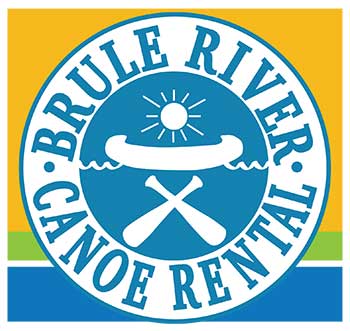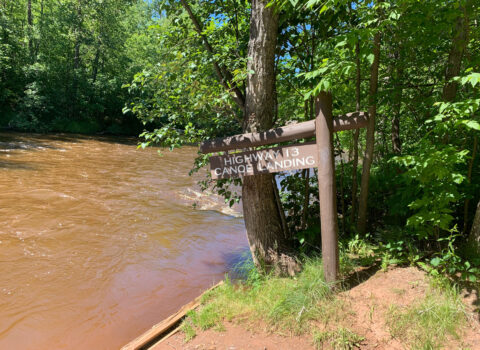About the Bois Brule River
44 miles long, this spring fed river flows north into Lake Superior and of the 250,000 rivers in the U.S. is one of only a few that has a ban on all inflatables such as inner tubes. That’s right, no noisy crowds of inner tubers on this extremely clean river. Every stretch of the river is unique from the next and has to be paddled to witness how special this gem of a river is.
The History of the “River of Presidents”
The Brule River was first used by the Chippewa Native Americans as a main route in transporting wares from the inland to Lake Superior and beyond. The same route, later adopted by the fur traders, named the Winneboujou area in honor of an Indian God.
The first white man to travel the Brule River was Daniel Greysolon, Sieur du Lhut, in 1680. The city of Duluth Minnesota was named for this early voyageur. Pierre Charles LeSueur came, in 1693, to keep the Brule-St.Croix route open for the traffic in furs and trade goods.
George Nelson, a fur trader, made the first trip into the interior of the Brule in 1802. Here the upper Brule flows slowly through a broad, flat bog. The banks are lined with towering spruce, cedar and tamarack, whispering the stories of days-gone-by. Henry Schoolcraft, who discovered the source of the Mississippi River at Lake Itassca, went down the river in 1832. He reported that there were 240 distinct rapids and “to give an adequate idea of this foaming torrent, it is necessary to conceive of a river flowing down a pair of stairs 100 miles long”.
The lower Brule is a fast moving river of almost continuous amazing and beautiful rapids. In a stretch of 12 miles, the river drops 200 feet, an average of 17 feet per mile. Picture yourself as an early voyageur encountering the northern wilderness before Wisconsin was designated a state in 1848. Primitive camping on the banks, splashing through the rapids in birch bark canoes, Native Americans and voyageurs paint wonderful scenes for the imagination. What excitement, trials and adventures were experienced by those early travelers! The Brule has had its fur traders, its roadway taverns, its mining excitement, its English colony and its lumbering enterprise, but all these are gone leaving scarcely a trace.
Wisconsin’s statehood and the growth of the country brought recognition and many renowned men to visit the Brule. General Ulysses S. Grant came in the 1870’s and Grover Cleveland in the 1880’s. senator Irving Lenroot had his summer home on the Brule for many years. President Calvin Coolidge spent the summer of 1928 at Cedar Island on the Brule, establishing his summer White House in Superior. Having access to the splendid ponds and excellent guides, Coolidge became know as an enthusiastic and skillful fly fisherman. Herbert Hoover and Dwight Eisenhower were guests at Cedar Island. These visits by Grant, Cleveland, Coolidge, Hoover and Eisenhower account for the Brule’s designation as the “River of Presidents”.


